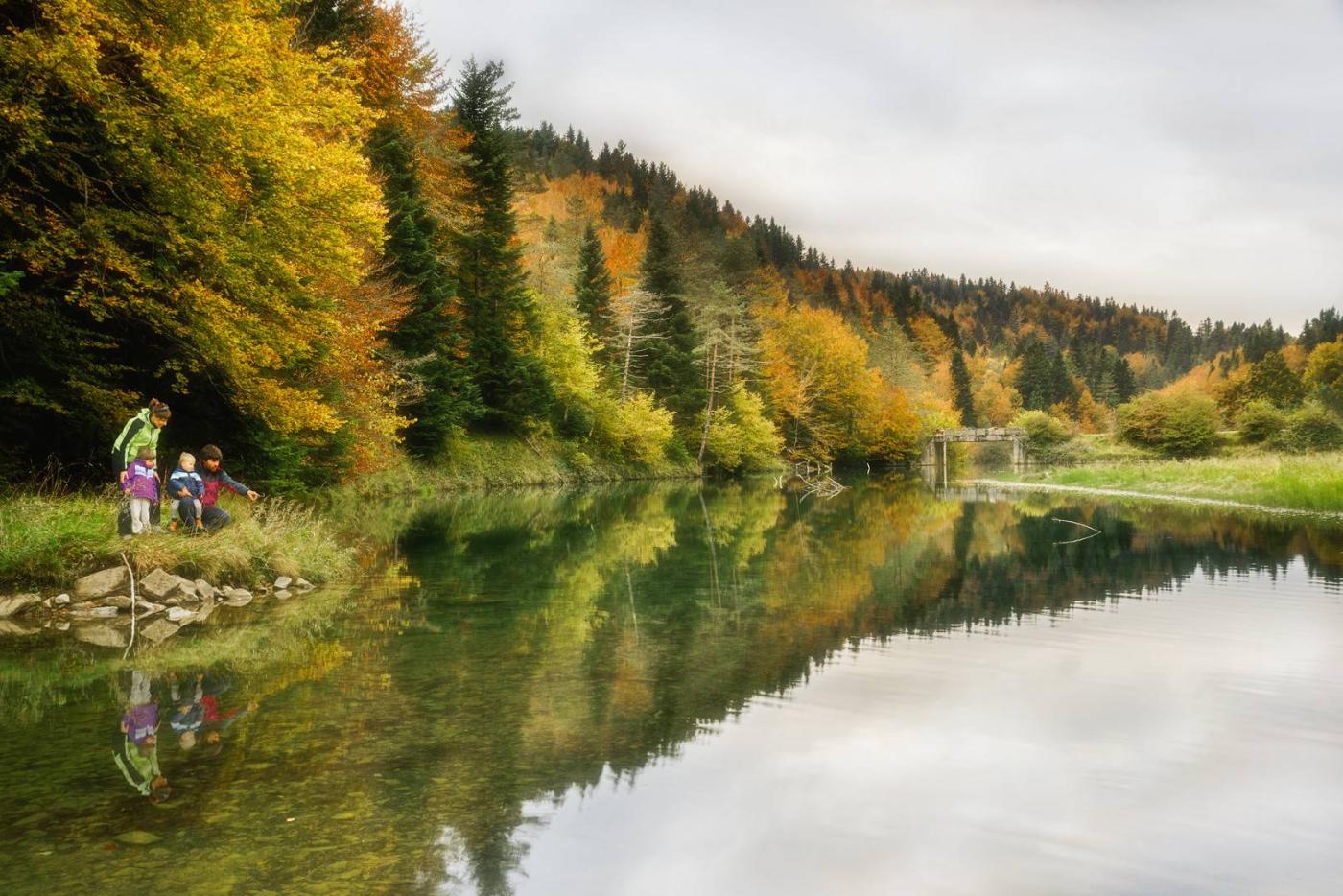We wouldn't be wrong in saying that our much-loved Irati Forest is almost as famous as the San Fermín festival.
This comparison in no way implies that you have to choose between them. Both are more than sufficient reason for visiting Navarre and, as you know, there's a time for everything.
But, if your body's asking for a nice, long forest bath, to enjoy the silence - that silence which luckily is never complete - and to use your muscles, then what it's really crying out for is the Irati Forest! Listen to it! Because your body knows you better than anyone.

A TREASURE IN THE PYRENEES
The Irati Forest
Much has been written about the Irati Forest and its undeniable beauty. And that's to be expected, as it's one of the largest and best-preserved beech and fir forests in Europe.
Although this extensive woodland has been harvested for timber since the 15th century, it is still extremely well-conserved today thanks to the respect shown by the inhabitants of these valleys.
Beeches, oaks, firs, birches, willows, ferns, mosses, among others, are home to stags, roe deer, wild boars, and a host of other inhabitants, giving this area its great environmental wealth.
Oh, and let's not forget its smaller inhabitants! As the Irati Forest is a Special Protection Area for birds, and this is all too evident, with woodpeckers - the Irati Forest is one of the last strongholds for this species - , black woodpeckers and white-backed woodpeckers. And there are also large birds of prey such as the bearded vulture, peregrine falcon and golden eagle.
A large family in a large abode.
This magnificent conservation and biodiversity is also due to the three protected areas of the Irati Forest: the nature reserves of Mendilatz and Tristuibartea and the strict nature reserve of Lizardoia, all helping to keep the forest in good condition.
Hiking in the Irati Forest How to get there
The Irati Forest is located in the heart of the Pyrenees. Most of the forest is located in the Aezkoa and Salazar valleys in Navarre and, to a lesser extent, in the French valleys of Cize and Soule.
We're now going to give you a few details about the trails that you can do, depending on your chosen point of access:
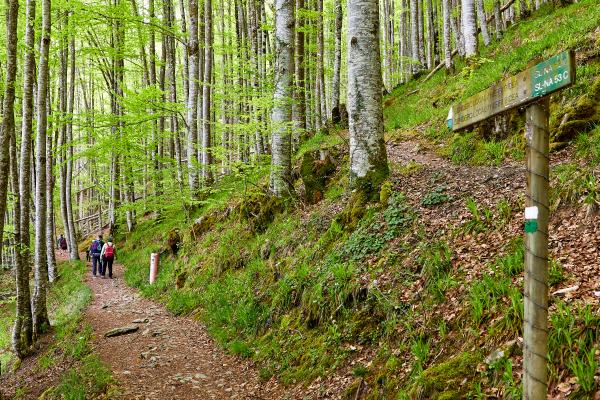.jpg)
Access points through the Salazar Valley
-
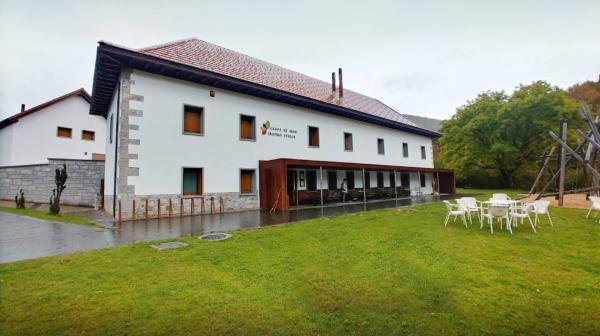
From Ochagavía
Casas de Irati «Virgen de las Nieves» Visitor Centre
Just before you reach the village of Ochagavía, take the turn-off on the NA-2012 and in some 40 minutes - 23 kilometres - you'll get to the "Centro de acogida Casas de Irati"visitor centre offering an information point, forest rangers service, car park, picnic area, bar-restaurant and a bike hire service which is complemented with a small bike repair shop.
The following trails start from the car park:
-
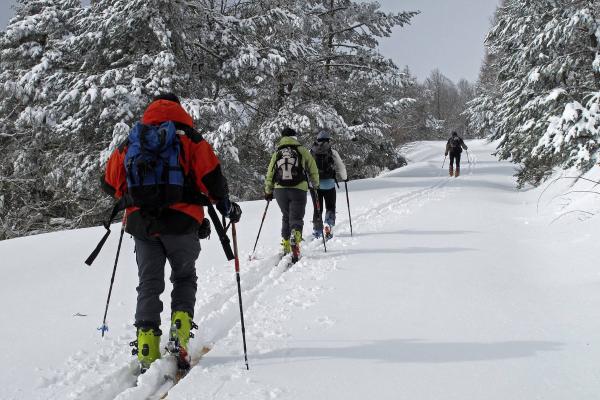
From Ochagavía
Irati-Abodi Mountain Activities Centre (Pikatua area)
Some 3.5 km from Ochagavía, you will reach the village of Izalzu, which marks the start of a trail based on a popular legend:
Following on along the road towards Larrau -France-, you reach the Irati-Abodi Mountain Centre. This is the perfect place for doing mountain sports in any season of the year. It has 4 trails which can be explored with skis and snowshoes in winter:
It also provides information on MTB trails, a hire service for bikes, skis and snowshoes, as well as a cafeteria-bar-restaurant and car park.
5 colour-coded routes with different levels of difficulty start right from the car park. Check them out!
A little further on is the Pikatua viewpoint (some 1,300 metres above sea level) and the mythical Mount Orhy, which, with its alpine air, is the first 2,000-metre mountain in the Pyrenees.
More information about Irati-Abodi
Access points through the Aezkoa Valley
-
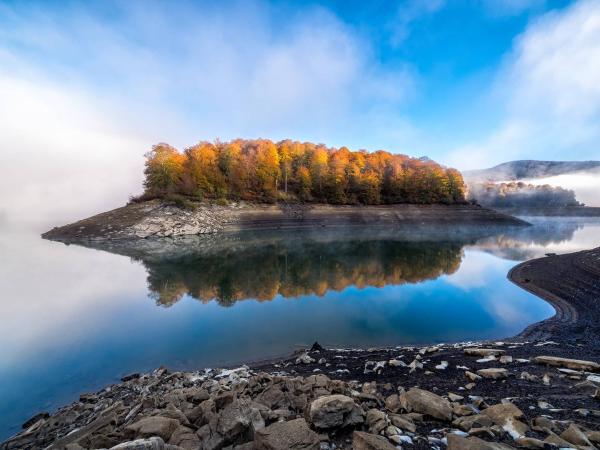
From Orbaizeta
Arrazola information point and Irabia Reservoir dam
The Arrazola information point is located some 8 minutes from the village of Orbaizeta. Its services include forest rangers, car park and picnic area. The following trails start from this point:
A 15 minute drive from the Arrazola visitor centre takes you to two small car parks alongside the Irabia Reservoir dam. The following trails start from this point:
-
Paraísos-Erlan
- N.B.: The trail Vuelta al Embalse de Irabia cannot be completed at present because the bridge at the thin end of the reservoir cannot be passed. Instead, you can:
- See the southern part of the reservoir from the Orbaitzeta access and return on the same path.
- See the northern part of the reservoir from the Casas de Irati access and return on the same path.
-
-
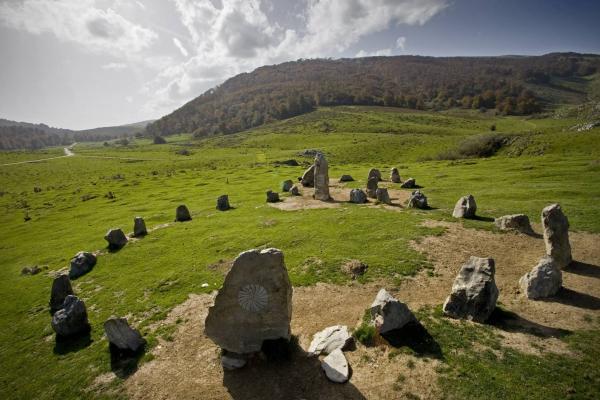
From Orbaizeta
Orbaizeta Arms Factory and col of Azpegi
5 kms from the village of Orbaizeta stand the remains of the Orbaizeta Arms Factory marking the start of the following trail:
-
Arlekia-Lauzaran
And, a further 3 kms along the trail will take you to the Azpegi Shelter, marking the start of the following trails:
- N.B.: The trail Vuelta al Embalse de Irabia cannot be completed at present because the bridge at the thin end of the reservoir cannot be passed. Instead, you can:
- See the southern part of the reservoir from the Orbaizeta access and return on the same path.
- See the northern part of the reservoir from the Casas de Irati access and return on the same path.
-

App for hiking in the Irati Forest
This app gives you all the information you need to get you started along the trails. So, get going and organise your visit to this TOP nature site.
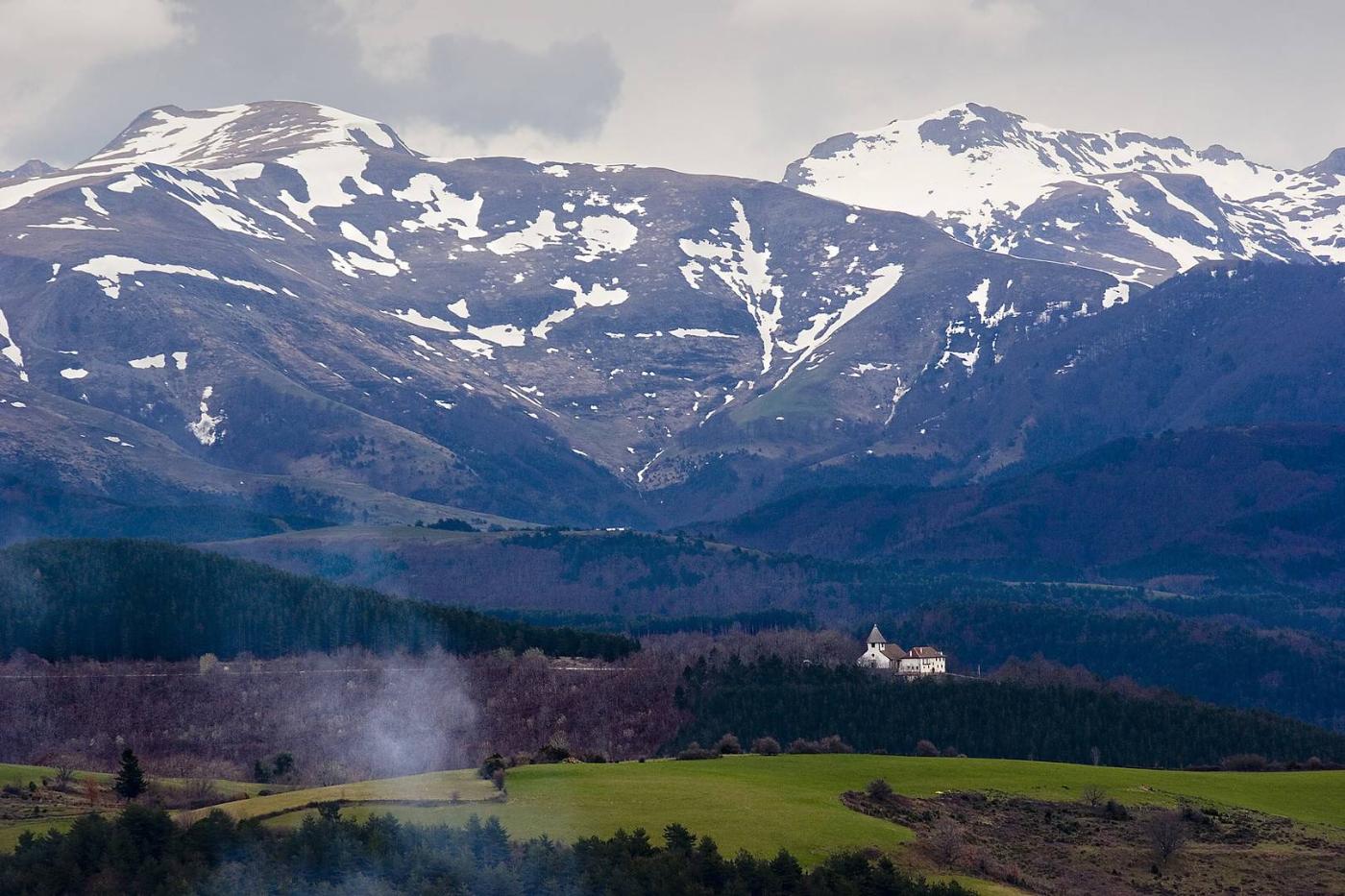

More sport?
-
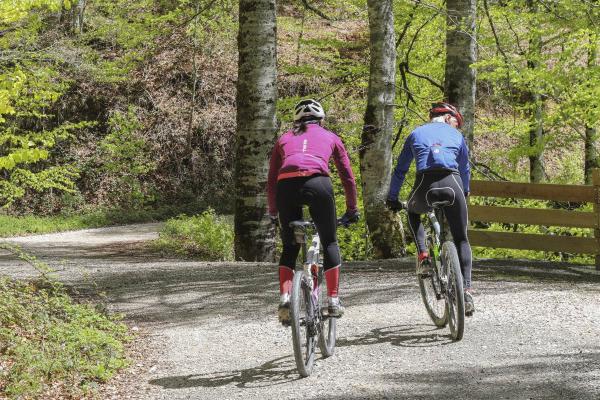
Espacio BTT Irati (Irati MTB Area)
Experience absolute freedom in this exceptional setting. This area offers you 16 MTB trails to choose from, with something for all abilities.
This MTB initiative is part of a joint project between the valleys covered by the Irati Forest: Salazar and Aezkoa on the Navarre side and Zuberoa and Cize on the French side. Because, mountain bikes are not bothered about borders! The aim is simple: to ride through as many places as possible.
So you can enjoy its more than 400 bikeable kilometres to really explore Irati and its surrounding area.
And don't forget that at its visitor centres you can get small repairs done to your bike, hire one if necessary and get all the information about the area. These are as follows:- Irati-Abodi Mountain Activities Centre and Casas de Irati in the Salazar Valley
- Arrazola in the Aezkoa valley
- Chalets d'Iraty on the French side
-
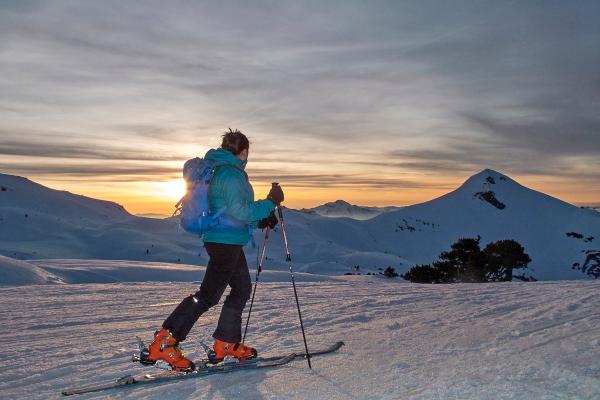
Snow sports
The Irati-Abodi Mountain Activities Centre located in the Salazar Valley allows you to exercise while calmly enjoying.all the beauty of the Navarre Pyrenees covered in snow.
-
Cross-country skiing: three easy trails that start from the centre itself and cover a total of 22 kilometres. There's also a 16 km trail for more experienced skiers.
-
Snowshoeing: the ideal sport for those who'd like to enjoy a walk through snow-covered landscapes yet aren't up to skiing. What's more, you can hire all the gear at the Visitors Centre itself.
You can also be adventurous and do alpine or backcountry skiing on trails partly running through French territory.
More information about Irati-Abodi -
-

GR Long Distance Routes and Mountain Climbing
Let's not forget the mountaineering enthusiasts! So here are a few options. And don't forget that you can do the GRs in stages, there and back in the same day, which isn't bad at all!
-
Climb up the Pico Ori Peak -2,017m-: the most western “two-thousand” in the Pyrenees and the queen of mountains in the Salazar Valley. An easy accessible, very pleasant climb as it offers one of the most stunning views in all Navarre.
-
GR-11 Pyrenean Route: 170 kms pass through Navarre, divided into 8 stages. Stages 6 and 7 run through the Aezkoa and Salazar valleys.
-
GR-12 Euskal Herria Route: At present, only the section in Navarre is maintained. Stage 7 is the one to go through the Irati area.
-
Planes en la Selva de Irati
Places of Interest
Places of Interest
Salazar Valley
Apart from the the iconic Irati Forest and the beautiful village of Ochagavía, there's much, much more to the Salazar Valley. So if you'd like to really explore it, here are a few more snapshots.

-

Ochagavía
One of the prettiest villages in Navarre and winner of the "Maravilla Rural" (rural wonder) award on its own merit.
At the head of the Salazar Valley, at the confluence of the Zatoya and Anduña rivers, stands Ochagavía at an altitude of 764 metres, with a history dating back to the 11th century, no less.
The Plateresque outdoor cross by the river Zatoya welcomes you to this village of cobbled streets. Its houses are an unmistakeable - and unforgettable - example of the Pyrenean architecture in Navarre. During your strolls around the village, the 18th and 19th century houses emblazoned with their coats of arms, and the bridge over the Anduña are sure to catch your attention. -
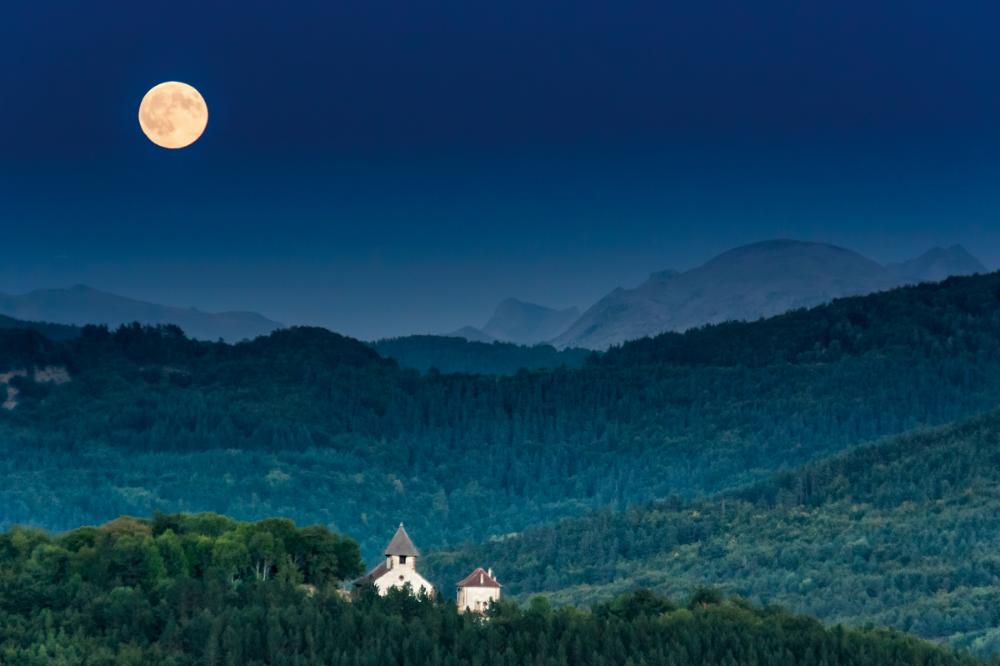
Sanctuary of Nuestra Señora de Muskilda
A cobbled path starts at the top of the village, taking you as far as the 12th century Sanctuary of Nuestra Señora de Muskilda.
Note its oak panelled ceilings. You won't have seen many like this!
-
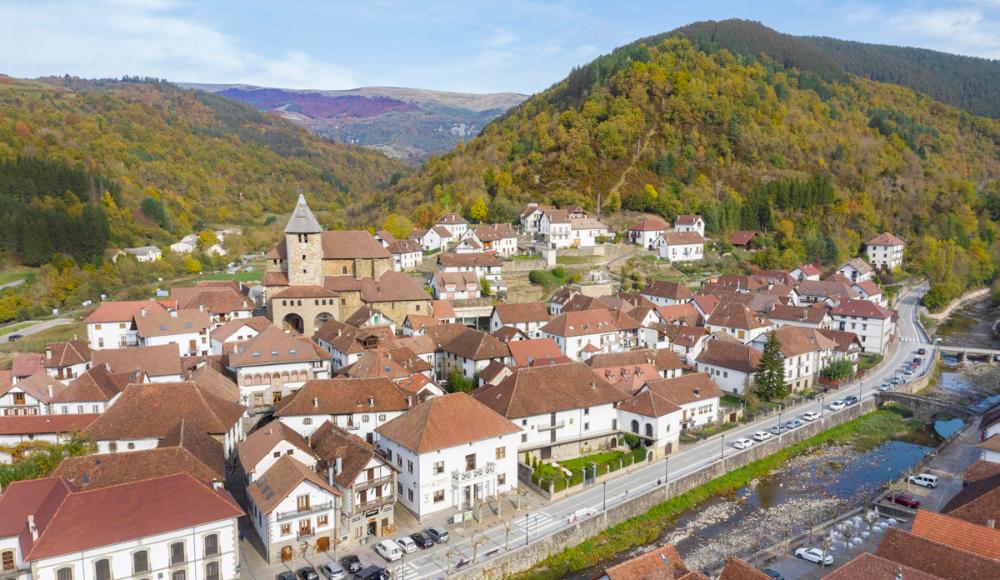
Nature Interpretation Centre (NIC) of Ochagavía
Right in the village centre, next to the Tourist Office there's a place that holds all kinds of information on the Irati Forest.
This three-storey building offers tourist and environmental information on the area, including geology, fauna and flora, an ethnographic exhibition with traditional utensils and tools from the Salazar Valley. It also organises different types of tours around the village and to other places in the valley.
More info on the NIC of Ochagavía -

Other villages in the Salazar Valley
Ezcároz, the capital of the valley, is also beautiful. It has the characteristic charm of the mountain villages, featuring excellently conserved traditional buildings with round-arched doorways and double-pitched flat-tiled roofs. Look at the coats-of-arms on the houses and try and find the shield of the valley, depicting a wolf with a lamb in its mouth.
Jaurrieta, is the highest village in the valley, at an altitude of 913 metres and is one of the municipalities in the valley, together with Oronz, Esparza and Igal, among others. Pyrenean architecture, Gothic and Romanesque buildings and disc-shaped funerary stelae are all to be found in these predominantly cattle farming villages.
Places of Interest
Places of Interest
Aezkoa Valley
In the shelter of the Pyrenees, in a winding web of gullies and mountains, lies the Valley of Aezkoa. Its nine municipalities —Garaioa, Aribe, Garralda, Aria, Hiriberri/Villanueva de Aezkoa, Orbara, Orbaizeta, Abaurregaina/Abaurrea Alta and Abaurrepea/Abaurrea Baja— are the embodiment of traditional rural architecture. Red-tiled houses, stone bridges and the peculiar raised granaries paint picture postcard scenes with the undeniable tones of the Pyrenees.

-
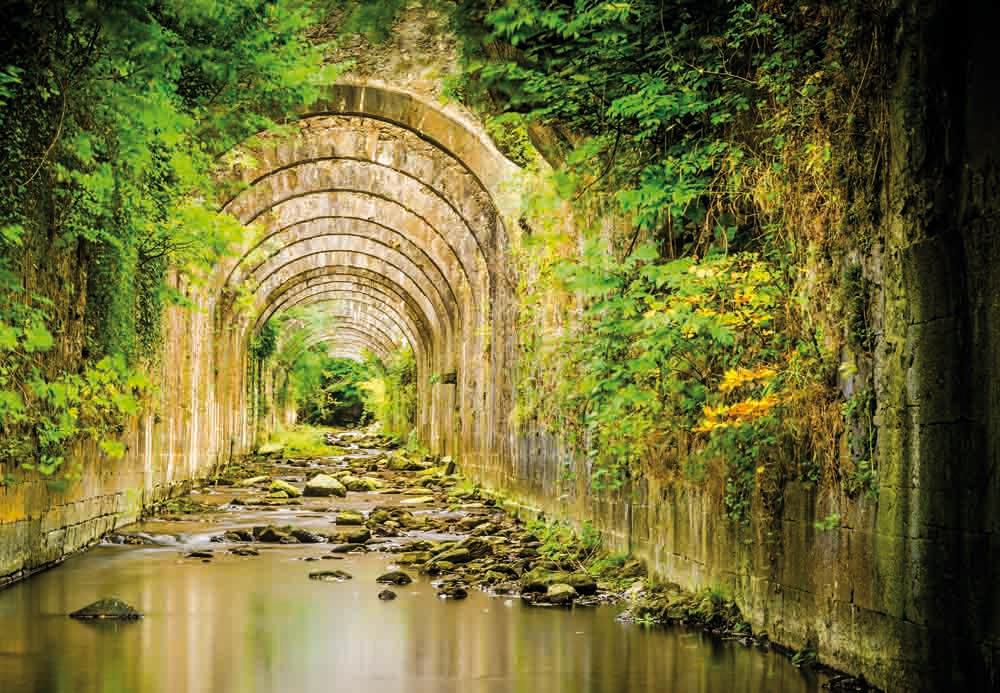
Orbaizeta Arms Factory
In the heart of the Irati Forest stands the most important example of industrial architecture in the area. Constructed in the 17th century to supply King Charles III with ammunition and arms, it owes its location to the wealth of wood, the presence of iron ore mines and the water courses in the area.
Declared an Asset of Cultural Interest, its ruins now shape a really mysterious and enigmatic landscape.
The newly restored Orbaizeta Palace Kultur Ola offers activities in this setting.
More information about the Arms Factory -

Raised granary route
The Aezkoa Valley holds 15 of the 22 raised granaries in Navarre, all of which have been declared an Asset of Cultural Interest. These constructions are complementary to the house, with a similar shape and building materials. They served to store the grain, protected against humidity and rodents. Stroll leisurely through the villages and try and find them.
Granaries in Aezkoa -
.jpg)
Gardens and labyrinth of the stelae
In Abaurregaina/Abaurrea Alta, the highest village in this valley and in all of Navarre, the old village cemetery has been musealised. This is an important archaeological site from which more than thirty medieval stelae have been recovered. A unique, gardened area and with a labyrinth that aims to evoke the cycle of life and its tortuous path towards death.
More information about the Garden of steles -
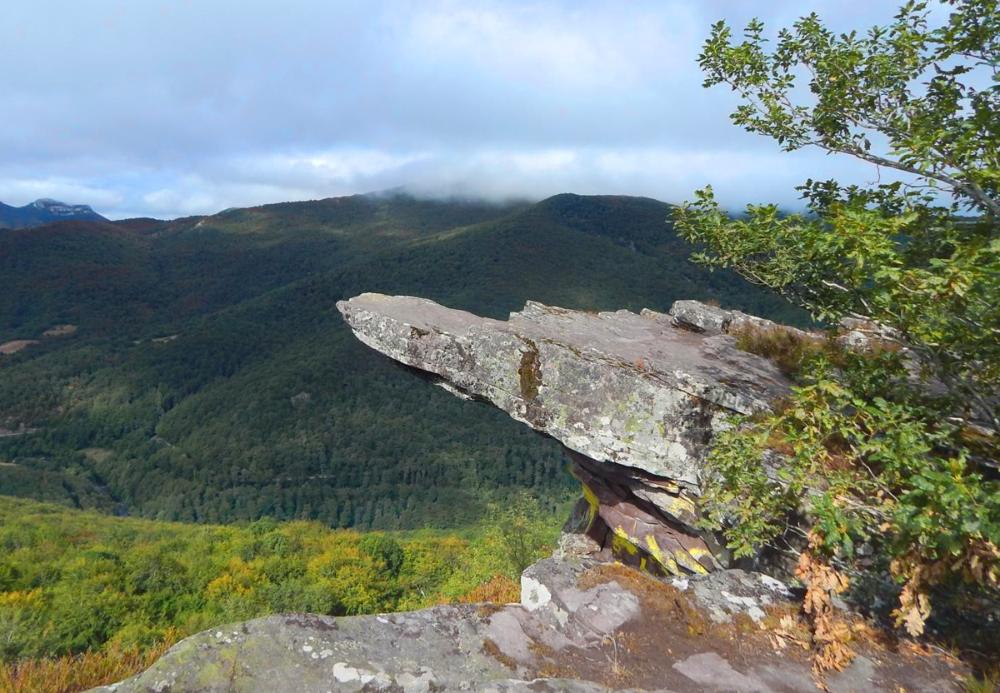
Trails through the Aezkoa Valley
The valley has a complete network of waymarked trails. Many of these are simple, didactic trails intended for enjoyment of nature as a family. While other trails are former historical paths, used in the past by hunters, charcoal makers and the transhumant movement of shepherds. There are also far longer trails for athletes with steep inclines, in which the effort made is amply rewarded by the stunning views offered.
More trails in Aezkoa -
.jpg)
Viewpoints to take your breath away
Another option is to explore this valley by doing a tour of the information viewpoints. These will bring you closer to the landscape, nature, history, ethnography and unique features of this wonderful and surprising valley. They're easy to access and will give you some incredible panoramic views. All the same, if you suffer from vertigo... then think twice before you get going.
See the 12 viewpoints
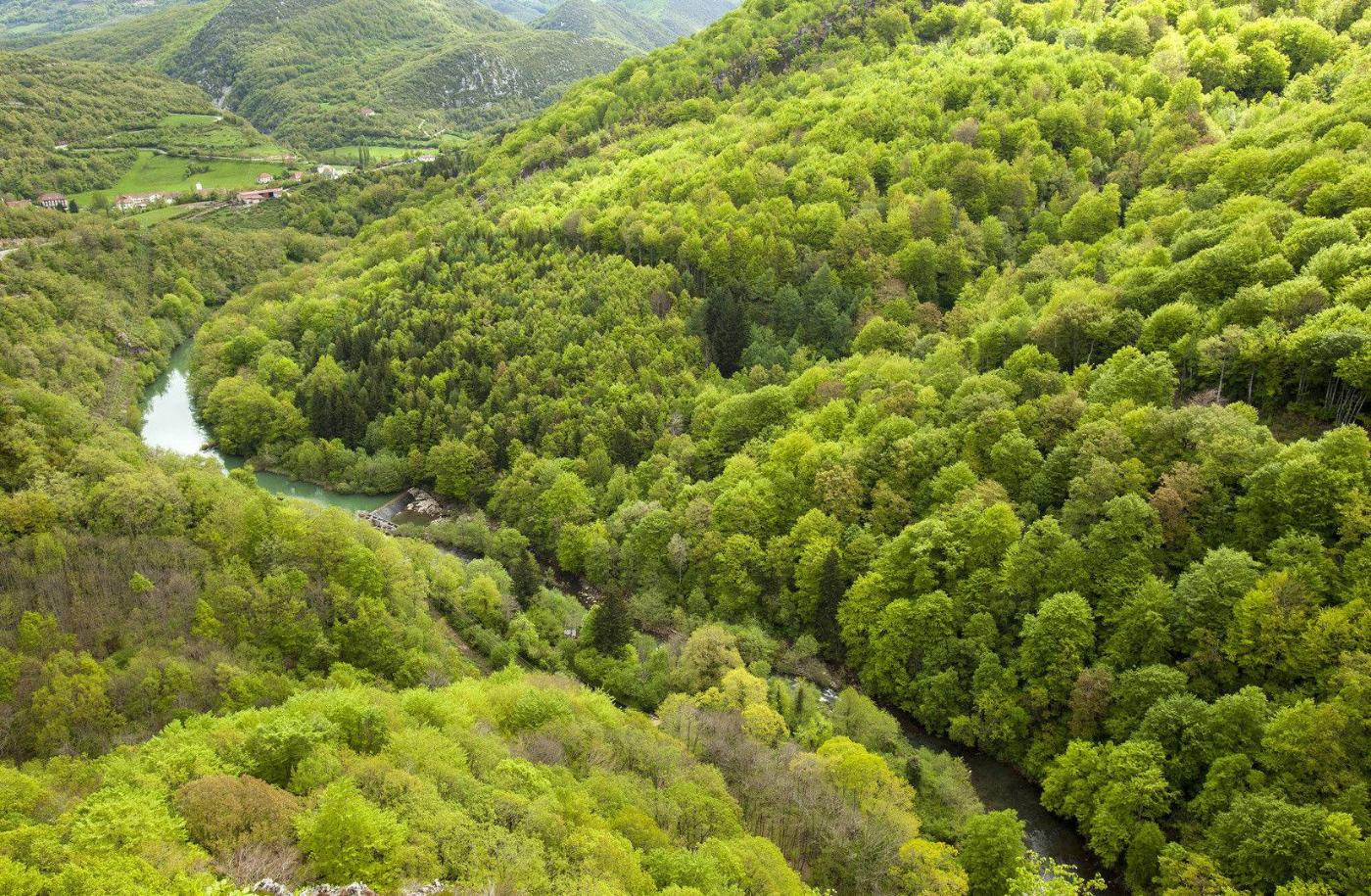
Food and accommodation close to the Irati Forest
After all this activity, what you'd really like to do is to sit down at a table and quietly sample the local cuisine. And then of course, you can forget your car and stay at one of the accommodation options.
And the fact is that the area is so incredibly extensive and there are so many things to do, that the best thing is to spend a few days in contact with the real rural world and with the wonders of nature.
-

Pyrenean cuisine
Migas de pastor (shepherd's breadcrumbs), wild mushrooms in autumn, veal and suckling lamb, Navarre-style trout (fried with serrano ham) or game stew - deer, wild boar or pigeon - and any pork product are the stars of the regional cuisine.
To round off the menu, milk-based home-made desserts, with particular mention of cheese made with local sheep's milk, and pacharán, a regional liqueur made from sloe berries and aniseed, extremely digestive after a good meal.
-

Rural accommodation
A relaxing sleep after a good walk or practising your favourite sport is sure to round off your experience in the Navarre Pyrenees. In the area, there are a host of country hotels and guest houses with character and charm, country apartments and houses in which every attention has been paid to detail. And, for the more adventurous, youth hostels and campsites.
Articlesof interest
Precioso sendero temático en la Selva de Irati pasando por la cascada del Cubo
Sigue descubriendo rincones increíbles
-
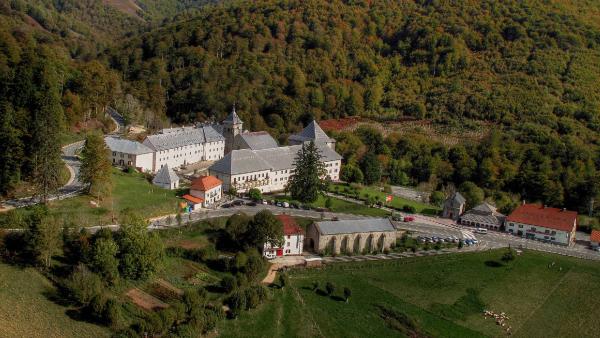 Ruta por el Pirineo navarro: Roncesvalles, Selva de Irati y Roncal
Ruta por el Pirineo navarro: Roncesvalles, Selva de Irati y Roncal
Ruta por el Pirineo navarro: Roncesvalles, Selva de Irati y Roncal
-
 Los otros 11 imprescindibles de Navarra
Los otros 11 imprescindibles de Navarra
Los otros 11 imprescindibles de Navarra


